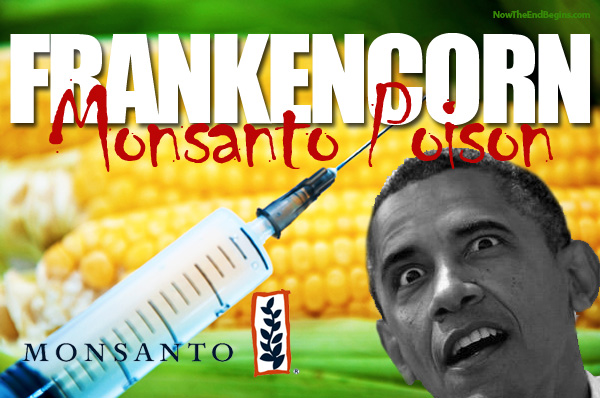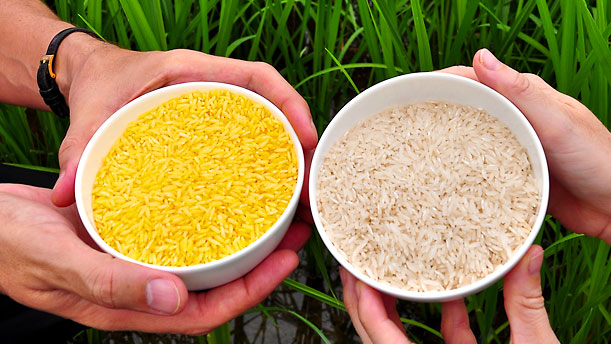Before I even start off, let me assure you that, despite what I'm about to say, I am not a shill for Monsanto. Now, people that know me may laugh at that and say that's pretty obvious, but for that rare person that does visit this blog and doesn't know me, I just wanted to make that clear. I put this disclaimer here because I've been researching Monsanto, particularly its business practices and the media surrounding the company, and I believe my findings are necessary to put forth into the digital ether.
These days, when anyone even utters that name, a shiver runs down our collective spine, and we scoff in disgust at the image of such a company, what with their desire to spread genetically modified seeds and ideas across the globe. However, after spending more time than I originally thought I would on research into court cases and the actual nitty gritty details of this company without the political and social spin that is usually attached to that name, I compiled a sort of highlight reel of some of the common misconceptions about Monsanto, particularly regarding their seeds and the food grown from them .
By no means am I justifying their company as a whole, but instead am trying to paint a not so black and white image so that you can make an educated judgement for yourself. With that said, let's talk GMO's.
Let's Talk GMO's
Although the debate regarding Monsanto and genetic manipulation is a hotly contested topic, I feel that it's imperative that I restrict the focus on a particular aspect of that discussion, and that is the seeds themselves that are being produced and distributed by Monsanto. By now, I've been pounded over the head with all sorts of horror stories concerning lawsuits against local farmers and the ill affects of such seeds, and honestly it's a bit suffocating with such a one sided barrage.
As I mentioned earlier, viewing things as black and white can be a dangerous catalyst for any particular side, leading to spreading of false statistics and facts that are in actuality just fibs. "Fear mongering" is what comes to mind, but at the same time even that stems from a very understandable concern for the human race's well being, and our country's track record for looking out for our health and best interests is less than stellar. Still, it'd be only right to squash the rumors and misinformation so that we can all be on relatively the same page.
MISCONCEPTION #1: GMO SEEDS ARE ALL STERILE/ CANNOT REPRODUCE
 |
| Subtle... |
Admittedly, it's a bit unnerving to think that this actually exist, however I am not qualified to say whether or not certain properties of such a modification, (for instance switching off certain genetic hindrances to crops to produce better yield and increase fertility,) without the ability to test such a thing over many life times.
MISCONCEPTION #2: THE "SEEDS BLOWING OFF A TRUCK" DEFENSE
Percy Schmieser was a canola breeder and grower in Canada, and his name came into the spotlight when a lawsuit was filed by Monsanto regarding the presence of Round Up Ready seeds that had grown accidentally in a select section of his own crops. Initially, Percy was approached by Monsanto in order to remove the seeds from his crops, the alternative being that he would pay for the licensing fees. Percy refused, stating that because the seeds were on his land that he shouldn't have to pay for the fee. Lawyer hand wringing ensued, and the lawsuit was born.
A rallying cry of sorts from countless people stems from the idea that if seeds blow off of a truck containing Monsanto seeds, or that pollen from said seeds crosses from a neighboring crop and contaminates a non Monsanto seed crop, then Monsanto will swoop down and steal the rug out from under you and leave you penniless because of a freak accident. In actuality, Monsanto will replace the crops that are of their seeds on their own dime, as long as you weren't purposefully violating their right to their seeds, because of that licensing fee. To this day, lawsuits have not been filed for any accidental cross pollination, but have been filed for deliberate use of the seeds without paying the licensing fee.
In Percy's case, although the initial seeds were indeed a genuine accident, those weren't what made Monsanto sue. It is widely believed and generally accepted that in the following season, Percy planted with those found Monsanto seeds, yielding a much more than "accidental" output; more than 60% of his canola crops containing the Round Up gene, from multiple independent tests. If logic is of any relevance these days, it should go without saying that seeds falling off a truck or pollen from neighboring Monsanto crops cannot in the realm of reality produce such a yield. It is through the deliberate planting of such seeds that would result in such a high percentage.
Lawsuits are always a nasty business, but it needs to be said that, although the patenting of seeds seems irksome, it is Monsanto property, and they are entitled to the profits that fund further research into creating higher yield and robust seeds. However, if it'll make you feel better, the patent on the seeds has an expiration date of 20 years, which will end in 2015.
MISCONCEPTION #3: GMO's Cause Cancer/Growths
One case that comes to mind the most with people concerned about the health risks of GMO's is the Seralini study. Gilles Eric Seralini is a professor of molecular biology in France, and he spear headed a group that conducted a two year study which involved feeding Sprague-Dawley rats a type of corn called NK603, a product that is produced by Monsanto. In this study, 200 of this particular breed of rats was used, 100 being male and 100 being female.
Ever since the release of this study, the parameters and guidelines surrounding this study have been heavily scrutinized and refuted on multiple occasions. For one thing, the Sprague-Dawley breed of rats is highly susceptible to cancer by itself, so from the very start the testing was flawed. Breast cancer is common in this breed, considering that there is a very troublesome type of fungus on the corn that makes them susceptible to such growths, and the study failed to factor that into account. When you conduct a study that falls within the lifespan of an organism that is already highly prone to cancer growths, you are manipulating the outcome and perception of the results. Secondly, the test groups for these rats were not large enough to factor out inconsistencies, and typical guidelines for conducting such a study were not followed or adhered to.
However, since this was a report that was sensationalist in its publication and media outreach, it created a fervor amongst anti-GMO organizations and the public alike. Interestingly, when this report was released, members of the press were forced to sign a confidentiality agreement of sorts to have access to the study, which stated that they could not contact outside sources of information from other professionals to cross check with the claims of the study. At the same time, Seralini announced a joint release of an upcoming book along with a movie that stemmed from the study, which seems a bit pre mature, considering that the data wasn't even given time for duplication and analysis before his media outreach.
THE FUTURE OF AGRICULTURE
 |
| Left: Beta Carotene "Golden Rice" enriched rice compared to regular white rice |
Now, with all that set aside, I feel I need to re assure those who are reading this that I am still skeptical about how prevalent GMO's are becoming in our country. Quite simply, I believe studies have not been conducted long enough to track any potential adverse effects of such genetic manipulation, especially effects that could harm many future generations, despite the lengthy history humanity has had with genetic modification. However, with the rapid increase in population throughout the world, the need for more food is a continuous burden, and companies like Monsanto, despite the fear stimulating surrounding them, are teaming with human beings; people with good intentions to bring more food into the world.
Yet, like any business, they are in the business of making money, and that is an aspect that often overshadows the potential good they bring into this world. Take the product "Golden Rice", for instance. Golden Rice is a genetically modified strain of rice that is enriched with high levels of beta carotene, which is used to supplement the lack of Vitamin A in hundreds of thousands of diets in underdeveloped parts of the world. Some argue that this is a ploy to take control by Monsanto to have a sort of corporate choke hold on agriculture, despite the number of lives this product has saved, and will further save in the future. As long as their is no complete dependency on this product and there are efforts to keep biodiversity high, then a happy median will be reached by saving people's lives, while at the same time funding these companies that are continuously researching into these products they are creating.
There are other fears, as well. Inevitably, the bugs and weeds that are being eliminated from these crops will start to develop an immunity to such genetic tampering and use of herbicides, resulting in the potential dependence of more potent chemicals and unsavory methods. There are ways to avoid such immunity in invasive species, but that requires methods that are time consuming and would result in not as much yield as this world requires.
Ideally, more involved tests on individual GMO's should be conducted over a more satisfactory length of time in order to determine their safety before being commercially available. Ultimately, with so many unknown factors and unintended consequences, I can not stress enough how important it is not to simply paint the other side as pure evil or good, but as someone who is part of the bigger solution, as long as we recognize our faults and utilize the best of our abilities and combine them to tackle this problem in unity.


No comments:
Post a Comment